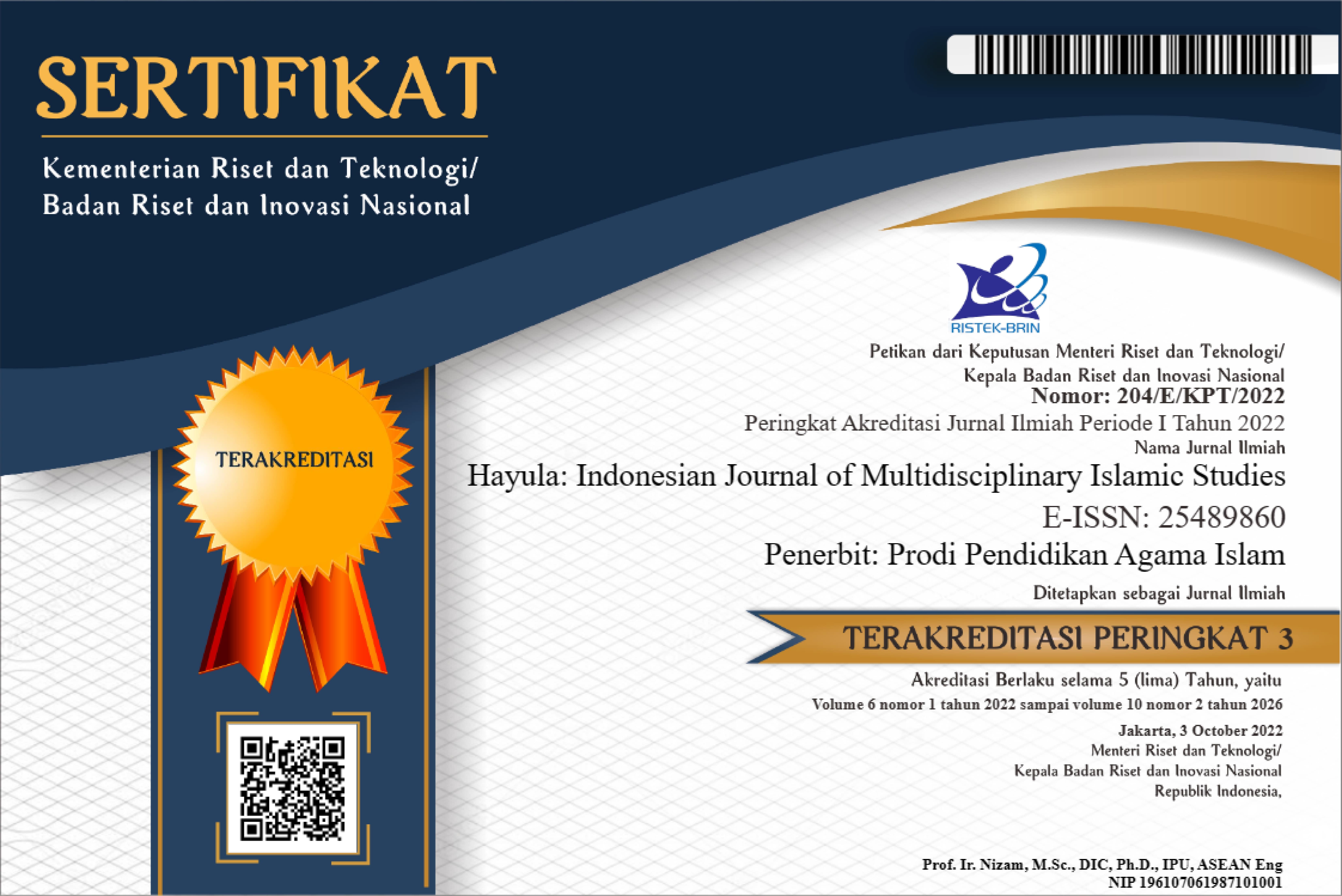Konstruksi Baru & Pengembangan Wisata Religi di DKI Jakarta
DOI:
https://doi.org/10.21009/hayula.003.2.03Keywords:
religious tourism, mosque tourism, history of islamic civilazationAbstract
This study examines and analyzes the new construction of the concept of religious tourism through mosques with the history of Islam behind it. In addition to tombs, mosques become a destination for religious tourism locations, namely religiously motivated religious tourism, to get closer to God Almighty. Visiting mosques can be a means to improve the side of individual spirituality, through aspects of worship that can be done in it; Also, able to promote religious understanding through a variety of religious studies that are routinely carried out. But apparently, some mosques have historical stories of the development of Islam in them. Through this story, the pilgrims were able to understand the role of the mosque in attaching the unity of the surrounding community against the invaders; mosques become the center of civilization. Through new construction and the development of religious tourism, the mosque insists that it is not only a place of worship; but also, as the center of civilization; community unifying area. This study uses a qualitative descriptive method with data collection in the form of observation, interviews, documentation, and literature studies related to mosques in the DKI Jakarta area. The findings in this study indicate the destination of mosques in the DKI Jakarta area, which can show its identity as the center of civilization; as a unifying society in the fight against invaders in the past.
References
login.aspx?direct=true&db=edo&AN=133759237&site=eds-live
Azmi, E., & Ismail, M. Z. (2016). Cultural Heritage Tourism: Kapitan Keling Mosque as a Focal Point & Symbolic Identity for Indian Muslim in Penang. Procedia - Social and Behavioral Sciences, 222(ASEAN-Turkey ASLI QoL2015: AicQoL2015Jakarta, Indonesia, 25-27 April 2015), 528–538. Retrieved from http://10.0.3.248/j.sbspro.2016.05.211
Bond, N., Packer, J., & Ballantyne, R. (2015). Exploring Visitor Experiences, Activities and Benefits at Three Religious Tourism Sites. International Journal of Tourism Research, 17(5), 471–481. Retrieved from http://10.0.3.234/jtr.2014
Brown, T. G. (2013). Muslim Networks, Religious Economy, and Community Survival: The Financial Upkeep of Mosques in Late Imperial China. Journal of Muslim Minority Affairs, 33(2), 241–266. Retrieved from http://10.0.4.56/13602004.2013.810118
Campoy-Muñoz, P., Cardenete, M. A., & Delgado, M. C. (2017). Assessing the economic impact of a cultural heritage site using social accounting matrices: The case of the Mosque-Cathedral of Cordoba. Tourism Economics, 23(4), 874–881. Retrieved from http://10.0.20.247/te.2016.0554
Egresi, I., Bayram, B., Kara, F., & Kesik, O. A. (2012). Unlocking The Potential Of Religious Tourism In Turkey. Geojournal Of Tourism & Geosites, 9(1), 63–80. Retrieved from http://e-resources.perpusnas.go.id:2048/login?url=http://search.ebscohost.com/login.aspx?direct=true&db=hjh&AN=85627250&site=eds-live
Faridl, M. (1985). Masjid. Bandung: Pustaka.
Forushani, N. S., & Gharaati, Hamed. (2016). The Investigation of Historical Role of Mosque Schools in Amendment and Improvement of Religious Discourse of Qajar Era (Case Study: Tehran during Qajar Era). Vol - 8, (2), 35. https://doi.org/10.22108/jhr.2016.20888
Hidayat, R. A. (2011). Masjid Sebagai Pelestari Tradisi (Kajian Fungsi Masjid Wonokromo Bantul Yogyakarta dalam Perspektif Historis). Analisa, XVIII(2), 230.
Khumaeroh, U., Narulita, S., & Aulia, R. N. (2017). The Improvement of Intrapersonal Communication Through Religious Tourism. Proceedings International Conference on Media Studies, 419–425. Kedah: UUM Malaysia.
Kurd, N. (2018). The Mosque as Heritage Site: The Al-Rashid at Fort Edmonton Park and the Politics of Location. Journal of Canadian Studies, 52(1), 176–192. Retrieved from http://10.0.12.66/jcs.2017-0068.r1
Maarif, A. S. (1997). Keterkaitan antara Sejarah, Filsafat, dan Agama. Yogyakarta: IKIP Yogyakarta.
Maksum, A. (2015). Interprestasi Sejarah sebagai Peristiwa dan Masalah Pendidikan. At Turats, 9(2), 6.
Narulita, S., & Anggraeni, D. (2018). Spiritualitas Modern Melalui Wisata Religi. Proceedings: Annual Conference for Muslim Scholars, (Series 2), 904–912. Retrieved from http://proceedings.kopertais4.or.id/index.php/ancoms/article/view/190
Narulita, S., Aulia, R. N., Wajdi, F., & Khumaeroh, U. (2017). Pembentukan Karakter Religius melalui Wisata Religi. Prosiding Seminar Nasional Tahunan FIS UNM, 159–162. Medan: Universitas Negeri Medan.
Rahman, T. (2011). Nilai Karakter. Yogyakarta: Laksbang Pressindo.
Rinschede, G. (1992). Forms of religious tourism. Annuals of Tourism Research, 19(1), 51–67.
Sugiyono. (2005). Metode Penelitian Kualitatif. Bandung: Alfabeta.
Sumalyo, Y. (2006). Arsitektur Masjid dan Monumen Sejarah Muslim. Yogyakarta: Gajah Mada University Press.
Suprasetio, A., Humaidi, & Narulita, S. (2018). Tracing the History of Islam in DKI Jakarta Through Religious Tourism. International Proceding Asean Youth Conference 2018, 518–525. https://doi.org/: 10.5281/zenodo.2549116
Downloads
Published
How to Cite
Issue
Section
License
Authors who publish with this Journal agree to the following terms:
- Author retain copyright and grant the journal right of first publication with the work simultaneously licensed under a creative commons attribution licensethat allow others to share the work within an acknowledgement of the work’s authorship and initial publication of this journal.
- Authors are able to enter into separate, additional contractual arrangementfor the non-exclusive distribution of the journal’s published version of the work (e.g. acknowledgement of its initial publication in this journal).
- Authors are permitted and encouraged to post their work online(e.g. in institutional repositories or on their websites) prior to and during the submission process, as it can lead to productive exchanges, as well as earlier and greater citation of published works.
Users/public use of this website will be licensed to CC BY






